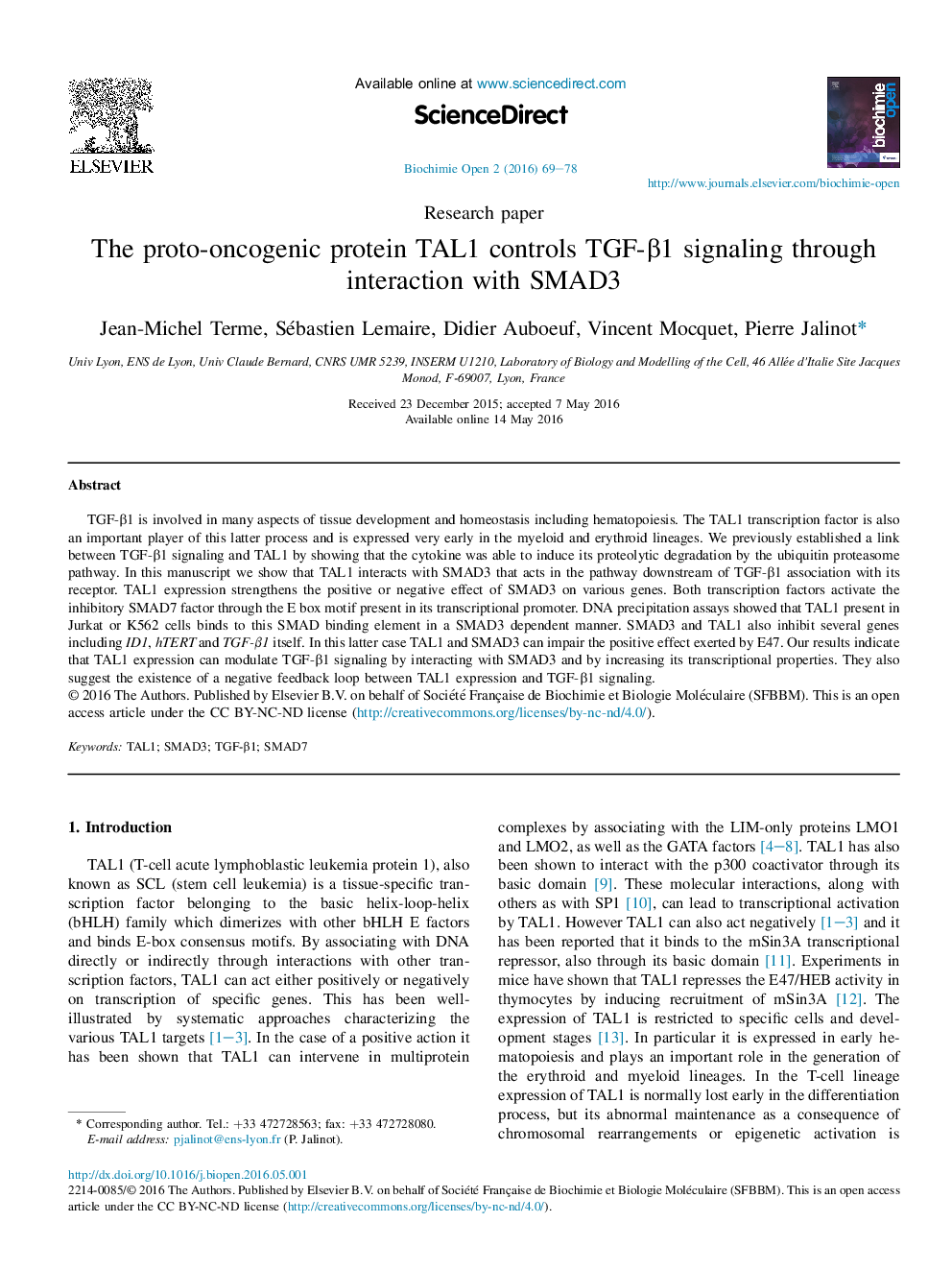| Article ID | Journal | Published Year | Pages | File Type |
|---|---|---|---|---|
| 1953617 | Biochimie Open | 2016 | 10 Pages |
•TAL1 binds the TGF-β1 responsive SMAD3 transcription factor.•TAL1 and SMAD3 can cooperatively activate or repress various genes.•Both transcription factors bind the SMAD Binding Element of the SMAD7 promoter.•TAL1 and SMAD3 repress the TGFB1 promoter and activate that of SMAD7.•Conversely TGF-β1 decreases TAL1 stability suggesting a negative feedback loop.
TGF-β1 is involved in many aspects of tissue development and homeostasis including hematopoiesis. The TAL1 transcription factor is also an important player of this latter process and is expressed very early in the myeloid and erythroid lineages. We previously established a link between TGF-β1 signaling and TAL1 by showing that the cytokine was able to induce its proteolytic degradation by the ubiquitin proteasome pathway. In this manuscript we show that TAL1 interacts with SMAD3 that acts in the pathway downstream of TGF-β1 association with its receptor. TAL1 expression strengthens the positive or negative effect of SMAD3 on various genes. Both transcription factors activate the inhibitory SMAD7 factor through the E box motif present in its transcriptional promoter. DNA precipitation assays showed that TAL1 present in Jurkat or K562 cells binds to this SMAD binding element in a SMAD3 dependent manner. SMAD3 and TAL1 also inhibit several genes including ID1, hTERT and TGF-β1 itself. In this latter case TAL1 and SMAD3 can impair the positive effect exerted by E47. Our results indicate that TAL1 expression can modulate TGF-β1 signaling by interacting with SMAD3 and by increasing its transcriptional properties. They also suggest the existence of a negative feedback loop between TAL1 expression and TGF-β1 signaling.
